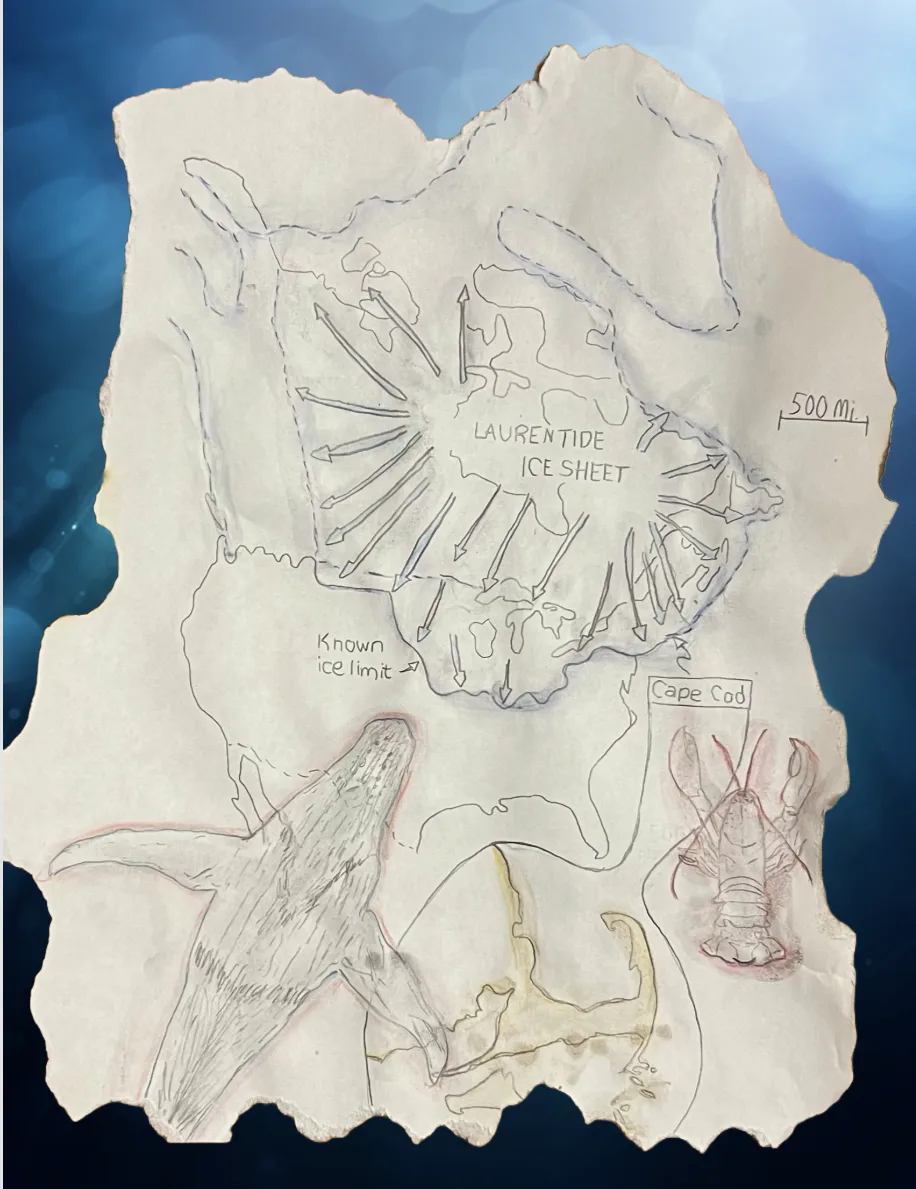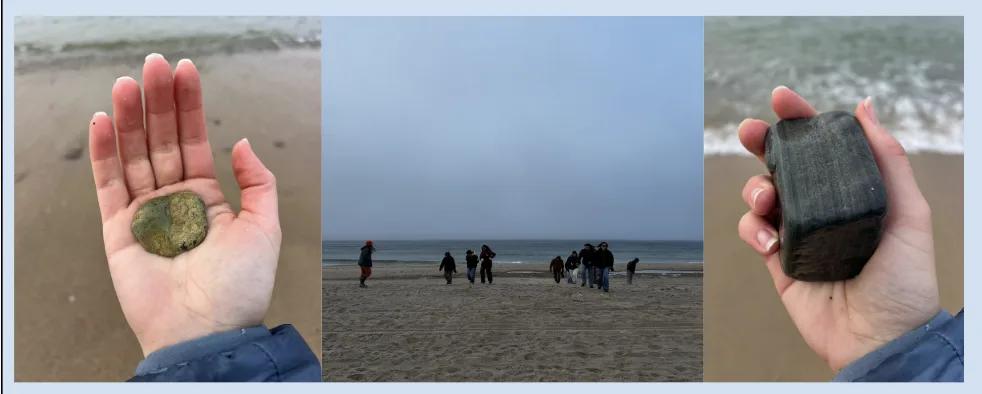Programs Blog
Thoreau and Glaciers and Rocks, oh my!

March 19, 2025
Time: 1357
Location: SEA Campus, Woods Hole, MA, USA
Weather: 49°F and sunny, ~8.5 knot wind from N/NE
“The sea-shore is a sort of neutral ground, a most advantageous point from which to contemplate this world.”
Henry David Thoreau, Cape Cod
While I fully agree with Thoreau, I struggle to “contemplate this world” in any meaningful capacity when I walk along Woods Hole’s seashores because I am distracted. Not by seagulls floating in the sea breeze or the lapping of the waves with the wind, but by rocks…
Before I dive into rocks, let me backtrack a little…Hi everyone! This is Olivia Hines, a junior at the University of San Diego studying environmental and ocean science. As you can probably guess, I approach marine science from a geologically-inclined perspective, and I would like to pursue geological oceanography for my higher education and career.
Alright, back to the true star of this blog post that could be equated to an action movie star in a cinematic epic – rocks! Woods Hole is located in the extreme southwestern corner of Cape Cod, meaning it shares geologic traits with the greater Cape. As Ana briefly mentioned in her blog post yesterday, Cape Cod is geologically unique when considered alongside the rest of New England because it was formed by glacier movement. The last glacial maximum for this region of the northeast was 26,000 to 19,000 years ago, when the Laurentide Ice Sheet extended down from Canada. Rock debris deposited by this sheet (called drift) buried existing rock along Cape Cod and continued to extend the peninsula as it bulldozed the sand and gravel of a drainage basin into a ridge. Therefore, Cape Cod is what geomorphologists identify as a terminal moraine – the remains of the furthest extent of a glacier prior to its retreat.
Contrary to the geologically gruesome picture that events of massive glacial movement might paint, I consider the aftermath of the Laurentide Ice Sheet’s occupation of the Cape to be rather beautiful. Enter the rocks at the seashore. Because Cape Cod is a terminal moraine, it is essentially an accumulation of all geologies that the glacier passed through on its way to its final destination at the sea. Therefore, rocks from Canada and other parts of the northeastern United States have found themselves situated along the seashore at Racing Beach, just 0.7 miles from our SEA campus. Just by plopping myself down on a section of Racing Beach and doing a 360° survey around me, I identify so many different rock types – each with their own unique lithological life histories. Granite next to citrine, granodiorite resting by agate, rhyolite highlighting the translucence of white quartz. Alternatively, the rocks we saw in Provincetown on Saturday are an even more diverse mix because some of them are oceanic in origin – some can even be traced to the Mid Oceanic Ridge in the middle of the Atlantic!
Looking forward, I cannot wait to be introduced to a whole new realm of rocks in Aotearoa and French Polynesia and I look forward to my Seamans daydreams while on lookout that will feature musings about the hidden geologies of the distant seafloor that lie thousands of meters below our vessel…
Shoutouts:
To my family at home in Reno (mom, dad, grandparents, aunts, uncles, cousins, and all the pets) – I know that you would all love Woods Hole! Thank you so much for your support in helping me pursue my lifelong passion and for your genuine interest in following along with my undergraduate journey and research.
Rumbaugh clan – No reports yet of an East Coast sasquatch, but I’m keeping my eyes and ears peeled 🙂
Ashlan – I think of you every day and even with all of the cool new pictures I am taking on this trip, you and I will always and forever be my phone’s lock screen image. Can’t wait to give you a hug in June, Big Cuz.

Recent Posts from the Ships
- Ocean Classroom 2024-A collaborative high school program with Proctor Academy
- Collaborations and Long-term Commitments: SEA’s Caribbean Reef Program Sets a Course for Coastal Programs that Compliment Shipboard Experiences.
- Sea Education Association students prepare for life underway using state of the art nautical simulation from Wartsila Corporation.
- SEA Writer 2022, Magazines From the Summer SEA Quest Students
- Technology@SEA: Upgrades Allow Insight into Ocean Depths
Programs
- Gap Year
- Ocean Exploration
- High School
- Science at SEA
- SEA Expedition
- SEAScape
- Pre-College
- Proctor Ocean Classroom
- Protecting the Phoenix Islands
- SPICE
- Stanford@SEA
- Undergraduate
- Climate and Society
- Climate Change and Coastal Resilience
- Coral Reef Conservation
- Marine Biodiversity and Conservation
- MBL
- Ocean Exploration: Plastics
- Ocean Policy: Marine Protected Areas
- Oceans and Climate
- Pacific Reef Expedition
- The Global Ocean: Hawai'i
- The Global Ocean: New Zealand